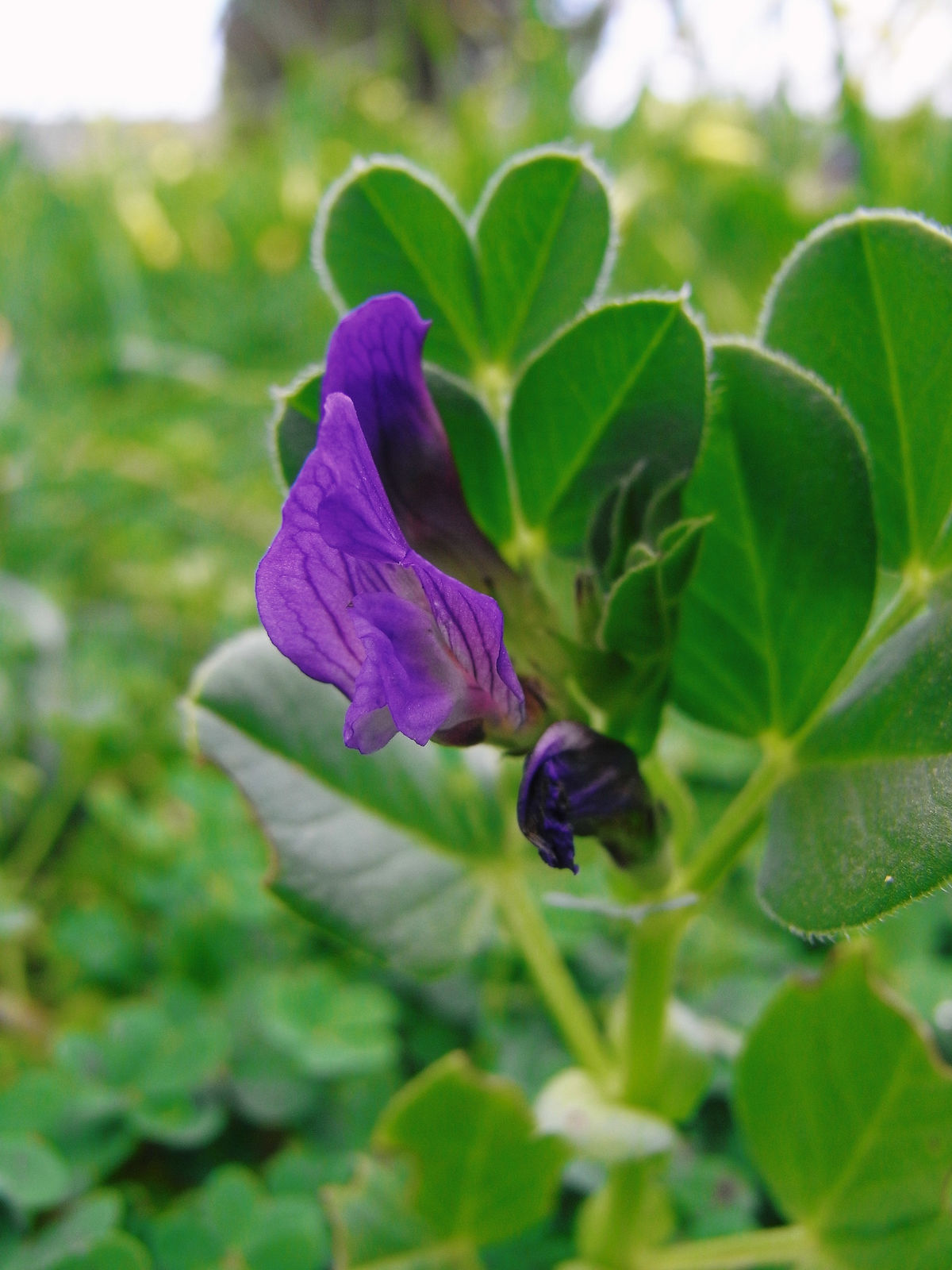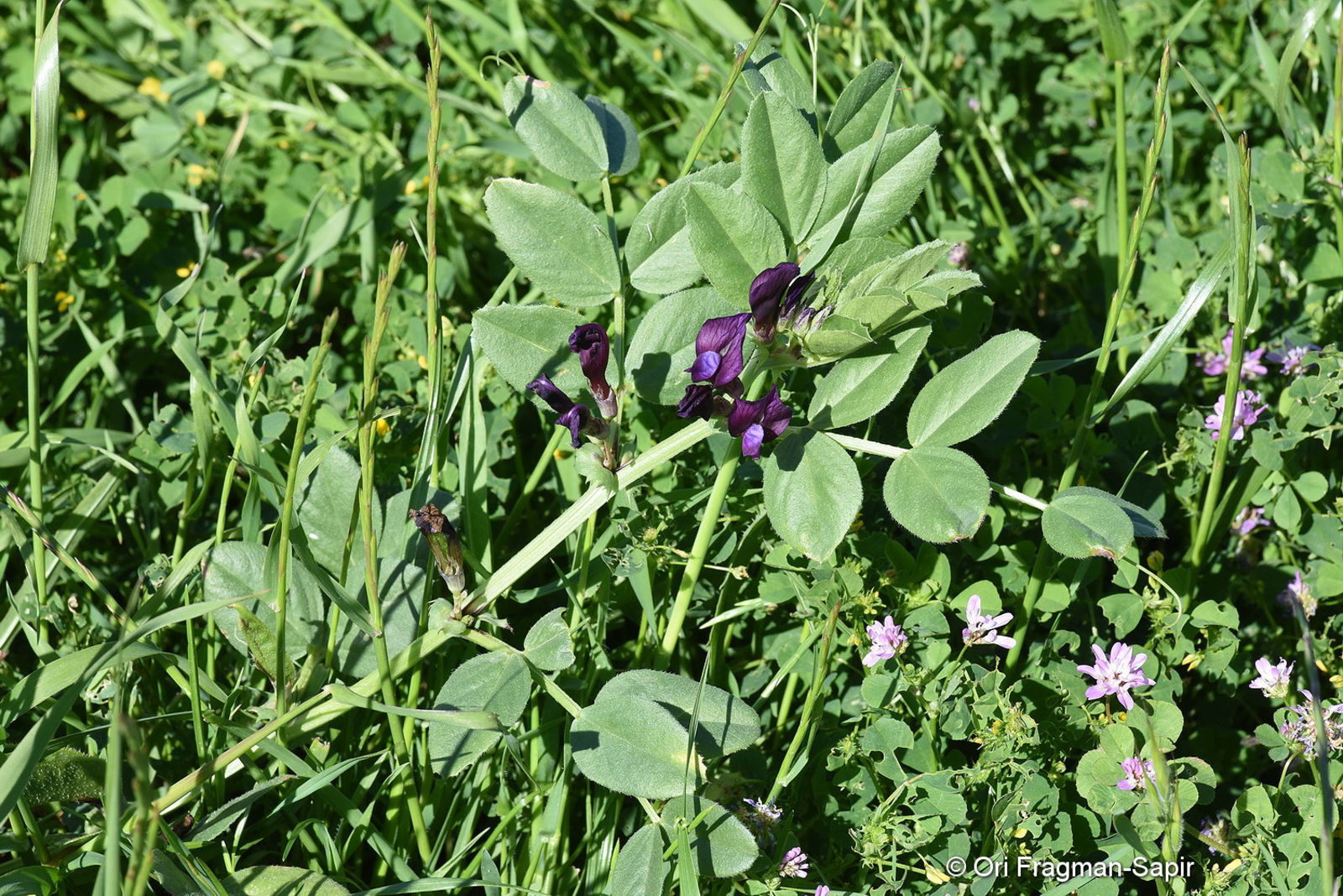Narbonne Vetch
vicia narbonensis
Also known as: ["Narbonne Pea","Narbonne Vetchling"]
Overview
A leguminous plant native to the Mediterranean region, known for its climbing habit and small, pea-like flowers.
Benefits & Perks
["wildlife attractant (bees, butterflies, birds)","drought tolerant"]
Botanical Classification
| Phylum: | Magnoliophyta |
| Class: | Magnoliopsida |
| Order: | Fabales |
| Family: | Fabaceae |
| Genus: | Vicia |
| Botanical Name: | Vicia narbonensis |
Plant Characteristics
Basic Information
- Category: Herbs & Weeds
- Suitable Location: garden bed or container in a location with good air circulation
- Suitable For:
- Is Weed: No
- Allergenicity: low
Environmental Needs
- Climate: {"temperatureRange":"5–30°C"}
- Hardiness: {"zones":"6–9"}
- Misting: rarely required, only if ambient humidity is very low
- Drainage: Fast-draining to prevent waterlogging.
- Soil Type: Well-draining loamy soil with added organic matter; can tolerate poor soils.
Maintenance Level
- Maintenance Level: moderate
- Toughness Level: moderate
- Pruning Frequency: As needed, typically after flowering or in early spring.
- Pruning Intensity: Light pruning; remove only dead or diseased parts.
Care Details
Ideal Sunlight Coverage:
Full sun (6–8 hours/day); tolerates partial shade but may produce fewer flowers.
Sunlight Tolerance Tips:
Acclimate plants gradually to intense sunlight; protect from harsh midday sun in hot climates; ensure adequate airflow to prevent fungal issues.
Care Requirements
Care Difficulty
easymoderate
Sunlight
full sun to partial shade
Rotate plants for even light exposure; use shade cloth in extreme heat; avoid placing in drafty areas.
Watering
every 7–10 days during active growth, reduce in winter
Water thoroughly but infrequently; ensure soil dries between waterings; avoid overhead watering to prevent fungal issues.
Soil
well-drained, loamy soil with moderate organic content
pH: Slightly acidic to neutral (pH 6.0–7.0).
Avoid heavy clay soils; ensure good aeration; test pH if issues arise.
Temperature
Prefers cool to moderate temperatures (60–75°F/15–24°C); can tolerate cooler nights down to 50°F/10°C.
Avoid placing near heat sources; maintain consistent temperatures; protect from frost.
Fertilizing
every 4–6 weeks during growing season
Apply fertilizer after watering to prevent root burn; stop fertilizing when plant is dormant; use organic options for gentle feeding.
Propagation
Methods
Seed propagation is most common; can also be propagated by division in early spring.
Step-by-Step Propagation Guide
- Sow seeds shallowly.
- Keep moist.
- Thin seedlings as needed.
- Or divide clumps carefully and replant.
Best Time: Spring, when the plant is actively growing.
Environment
Warm, humid environment with indirect light; maintain consistent moisture.
Medium
Well-draining seed starting mix or a mix of peat and perlite.
Hormone
Not required for seeds; division may benefit from rooting hormone.
Timeline
Seeds germinate in 1–3 weeks; division may take 2–4 weeks to establish.
Tools Needed
Seed trays, pots, pruners, rooting hormone (optional), watering can.
Quick Tips
Use fresh seeds for best germination; ensure good drainage for seedlings; protect young plants from extreme conditions.
Pruning & Repotting
Pruning Guide
Method
Cut stems back to the base or just above a healthy bud; avoid excessive pruning.
Pruning Plan
Minimal pruning needed; focus on removing dead or damaged stems to maintain plant health.
Tools
Pruning shears, sterilized scissors.
Checklist
Inspect plant; sterilize tools; remove dead/damaged parts; clean up debris.
Repotting Guide
Best Season
Early spring, before active growth begins.
Pot Size
Choose a pot one size larger than the current one; ensure it has drainage holes.
Method
Gently remove plant; trim roots if necessary; repot in fresh, well-draining soil; ensure proper drainage.
Suggestions
Repot only if the plant is root-bound or soil is depleted; typically every 2–3 years.
Checklist
Check root health; prepare new pot; use fresh soil; water lightly after repotting.
Advanced Care Tips
Watering Mastery
Watering Checklist
Check soil moisture; water deeply; ensure drainage; avoid wetting foliage.
How to Apply Water Properly
Water at the base of the plant, ensuring moisture reaches the root zone; allow excess water to drain freely; water in the morning to reduce evaporation and fungal risk.
Watering Schedule Tips
Water deeply once the top inch of soil is dry; reduce frequency in winter to prevent root rot.
Soil Improvement
Add compost or well-rotted manure for fertility; mix in perlite or sand for drainage.
Temperature Stress Management
Signs of Temperature Issues
Wilting, yellowing leaves, stunted growth, or flower drop in extreme heat or cold.
Cold Stress
Slows growth, may cause leaf drop, and can lead to frost damage in freezing conditions.
Solution: Provide frost protection in cold climates; avoid sudden temperature drops; ensure good air circulation to prevent mold.
Hot Stress
Leaves may scorch, growth may slow, and flowering can be reduced in excessive heat.
Solution: Provide partial shade during peak heat; increase watering frequency; use mulch to retain soil moisture.
Fertilizing Guide
Fertilizing Checklist
Check growth phase; dilute fertilizer; apply to soil; avoid foliage contact.
Fertilizing Method
Use balanced liquid fertilizer diluted to half strength every 4–6 weeks during active growth; avoid fertilizing in winter.
Common Problems & Solutions
Toxicity Warning
Cats
Slightly ToxicCats may experience mild gastrointestinal upset if they consume Vicia narbonensis seeds or pods. The lectins in the plant can disrupt digestive processes, leading to mild symptoms.
⚠️ Symptoms:
🌿 Toxic Parts:
⚡ Toxic If:
if eaten
Dogs
Slightly ToxicIn dogs, ingestion of Vicia narbonensis seeds or pods may lead to mild gastrointestinal irritation due to the presence of lectins and other bioactive compounds. Symptoms are typically self-limiting but can cause discomfort.
⚠️ Symptoms:
🌿 Toxic Parts:
⚡ Toxic If:
if eaten
Humans
Slightly ToxicVicia narbonensis contains lectins and other compounds that can cause mild gastrointestinal distress when ingested in significant quantities. The lectins interfere with nutrient absorption and may lead to digestive upset.
⚠️ Symptoms:
🌿 Toxic Parts:
⚡ Toxic If:
if eaten
Frequently Asked Questions
Q: Is Vicia narbonensis edible?
A: While parts of the plant are used in some traditional dishes, it is generally considered mildly toxic and not recommended for consumption.
Q: How does Vicia narbonensis grow?
A: It is a climbing plant that thrives in well-drained soils and full sun, often used in wildflower gardens.
Q: Does Vicia narbonensis attract wildlife?
A: Yes, it is known to attract bees and butterflies due to its nectar-rich flowers.
Quick Reference
| Family: | Fabaceae |
| Care: | easy |
| Light: | full sun to partial shade |
| Water: | every 7–10 days during activ |
Get Expert Care Tips
Download the Plantious app for personalized care reminders and plant identification!
Google Play App Store








